Winter garden trends – 5 ways to uplift your yard for the coldest season
Bright stems, wildlife and evergreen foliage can bring life to your backyard in winter

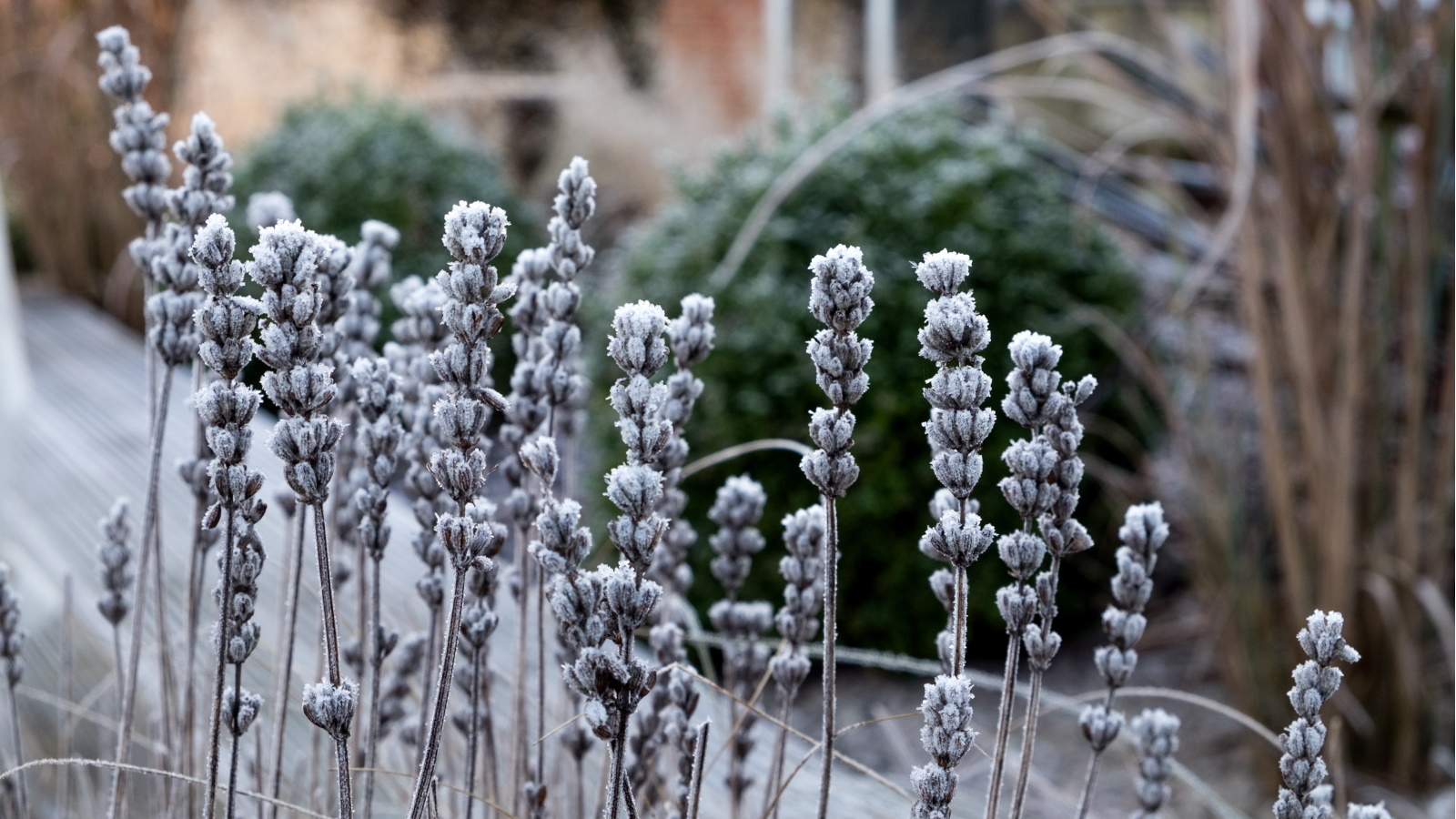
The dormant season in the yard can be truly beautiful in its own way. While there isn't a lot of active growth happening among plants, frost-sprinkled bare stems and the appearance of winter wildlife can bring a buzz to your yard nonetheless.
You may have already planned your winter garden when thinking about about what's coming up on your winter gardening checklist, but with an overwhelming number of possibilities of what you can achieve during this time, don't forget to also think some of the more aesthetics aspects.
From container gardening to sculptural features, garden design experts have shared their top winter garden trends for the 2024/25 season and we've compiled them right here for you to explore.

5 winter garden trends for the 2024/25 season
When curating your winter outdoor landscape, it's important to not lose sight of keeping your plants happy and healthy during harsher weather conditions. Make sure to avoid winter garden mistakes no matter which of the below trends you pursue this year.
1. Infuse some scent into your yard
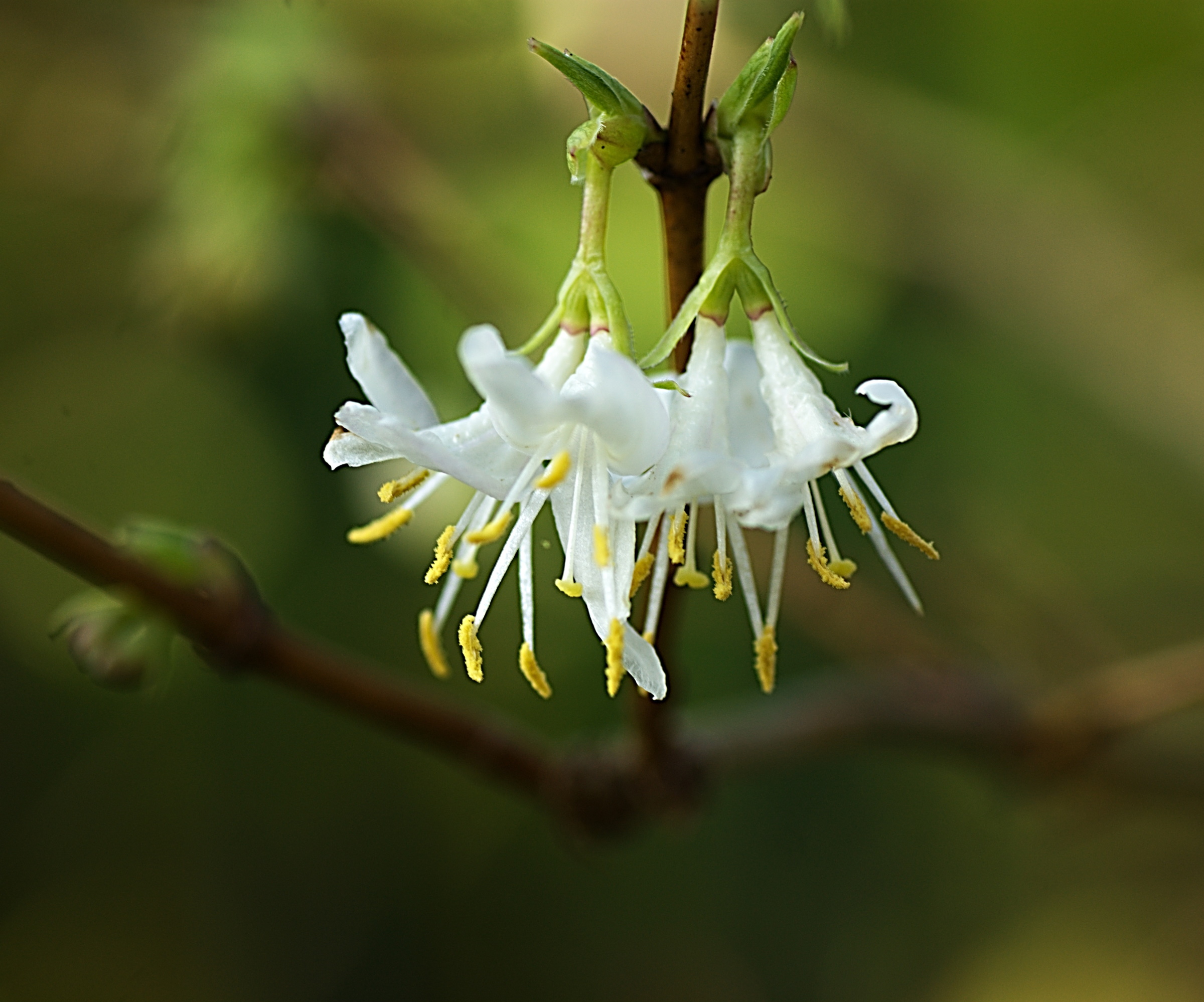
If you love a fragrant garden, you'll be happy to know there are plenty of winter flowering shrubs that offer unique and divine scents for the coldest season.
Incorporating winter flowers for scent is a great way to uplift your yard where it otherwise lacks the bountiful blooms of spring and summer. Placing fragrant winter flowers close to your house even means you can enjoy your winter yard by just opening the window.
'Winter honeysuckle (Lonicera fragrantissima) is one of the best honeysuckles and one of my top choices for winter,' says Mary Jane Duford from Home for the Harvest. 'It's a surprisingly hardy flowering shrub native to Central and South China. The flowers have a lemon-like fragrance and bloom in late winter,' she adds.
Design expertise in your inbox – from inspiring decorating ideas and beautiful celebrity homes to practical gardening advice and shopping round-ups.
Photographed above, these winter bloomers are hardy to US hardiness zone 4 to zone 8. They can be found at a range of suppliers, including this live winter honeysuckle plant from Amazon.
'It’s spreading habit means it must be mechanically removed when it gets out of control,' notes Mary. 'Where winter honeysuckle is invasive, the native plant Carolina jessamine (Gelsemium sempervirens) is a commonly recommended alternative,' she adds.
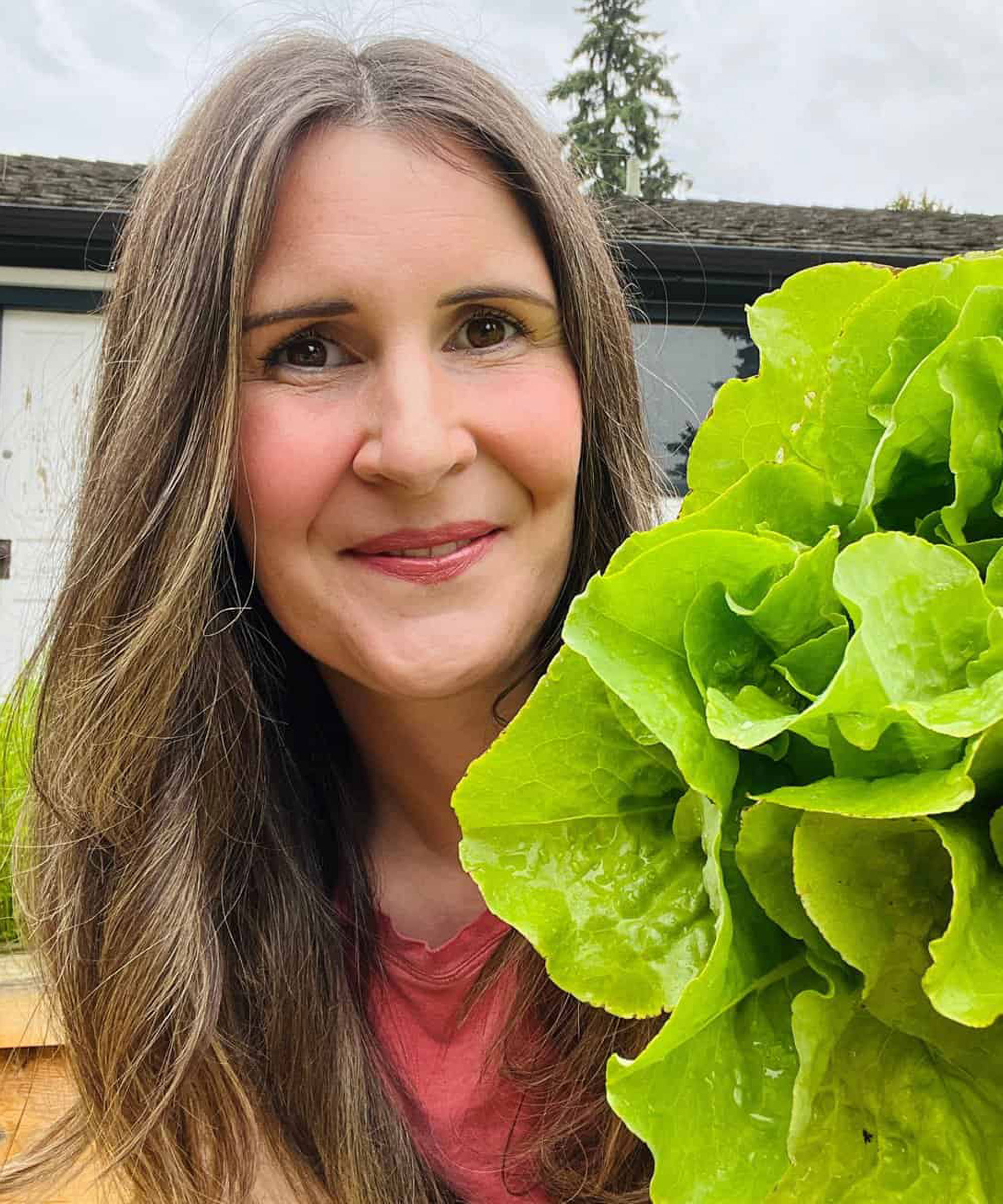
Mary Jane Duford is a certified master gardener and founder of Home for the Harvest. A qualified engineer, her expertise often intertwines with gardening methodologies. In addition to hydroponics, Mary Jane has extensive knowledge of sustainable gardening practices, soil science and selecting cultivars well-suited to home gardeners.
2. Incorporate colorful stems in your winter landscape
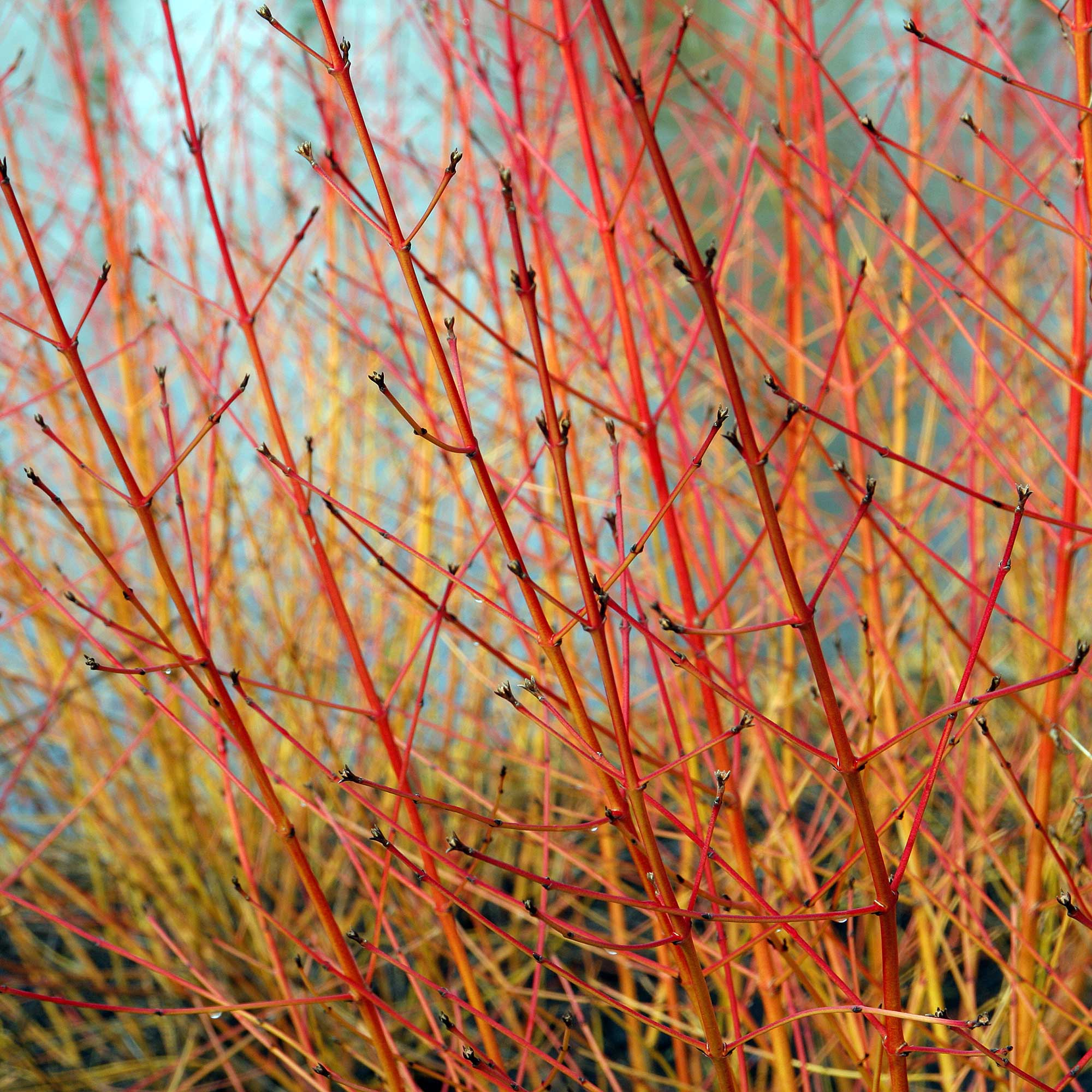
Your winter garden doesn't have to be bleak, as there are plenty of plants with attractive winter bark that can brighten up your space with vibrant hues.
Dogwood, or cornus, is perhaps the first to come to mind, with its iconic red and orange stems. There are a wide range of native dogwood trees to choose from, many offering beautiful blooms in spring, too.
'I love using 'Ivory Halo' dogwood because after the leaves fall the branches turn a deep beautiful red as the weather gets colder,' says garden designer Laura Janney. 'Also, the trunk of the corn-bark maple, or 'Senkaki,' begins to glow with a red hue just as the leaves have finished falling,' she adds.
You can use colorful stems in a range of ways, such as weaving them together to create sculptures. Or, you can place them in your borders to shine through after everything else dies back.
Find 'Ivy Halo' Dogwood at Nature Hills.

Laura is the Founder and Owner of The Inspired Garden. A winner of the 2024 Houzz Design award, Laura has over 20 years of experience in gardening and working with clients designing beautiful gardens. With multiple courses under her belt, Laura would make a great resource on all things gardening.
3. Embrace the beauty of seedheads

Plants for seedheads have been in popularity for some time already. They serve so many purposes, whether it's for collecting seeds or for offering a food source for wildlife during winter.
'Instead of cutting back your perennials at the end of the season, consider waiting to clean up your garden until early spring,' says Laura. 'Many spent blooms of perennials including coneflower, rudbeckia and asters are a favorite of birds during winter when other sources of food are scarce,' she explains.
As the frost hits, the aesthetic appeal of seedheads is enhanced even further. 'The spent blooms of the coneflower in particular provide interesting texture during the winter with frost defining their unique shape,' says Laura.
This is a great way to help birds in winter and feed birds in winter. If you're keen to do this, only cut back perennials in early spring before your plants start actively growing again.
4. Add sculptural interest with topiary
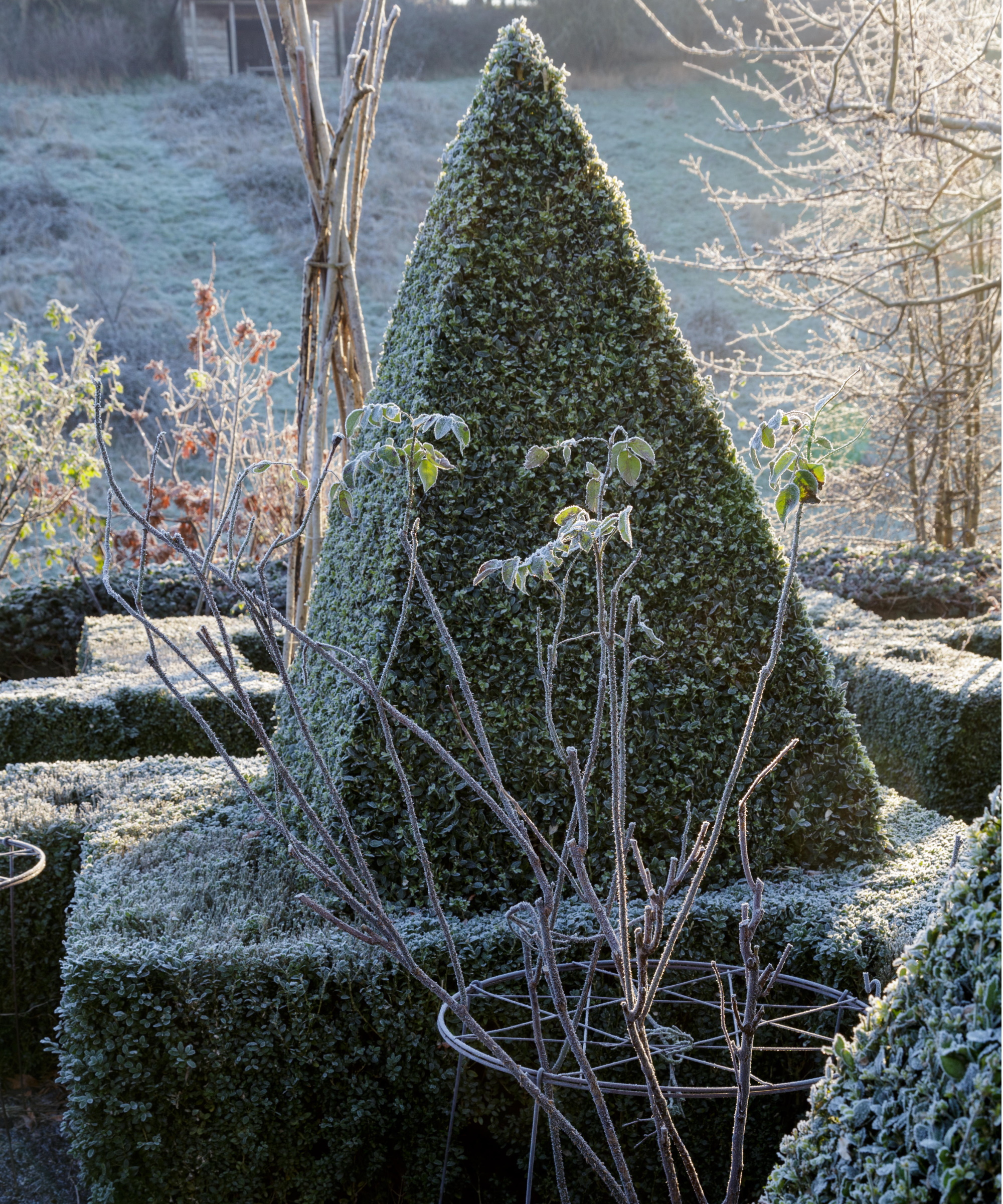
Another long-loved winter garden feature, topiary is used to add sculptural interest to the landscape. It's expected to be one of the key trends again this winter, as the Honest Communications Home and Garden Trends Report 2025 notes a topiary takeover will be celebrated. The joy of topiary is you can really personalize it to your aesthetic.
It's best cut topiary in advance of winter to ensure you don't harm the health of your plants. You may need to trim it to tidy it up in early fall, but you should aim to shape your topiary in summer.
There are also plenty of plants for topiary to choose from. 'Plants that work well for year-round topiary are generally evergreens with dense foliage,' says Mary Jan Duford. 'Evergreen shrubs like boxwood, yew and holly are classic options to give the landscape some structure,' she adds.
Using evergreen plants for topiary also means they can add green height in place of trees that have lost their foliage for winter. Plus, just like seedheads, frost can accentuate the shape of your topiary even more.
Pyramid and spherical shapes are good places to start if you haven't tried topiary before. These garden trellises from Amazon can be a good alternative, so you can get the topiary look by growing winter climbers.
5. Use greenery for winter containers

You might have already looked at container garden trends for the upcoming year, but you don't have to put your flower pots away at the end of summer - there's still plenty of use for them during winter.
'The single best way to add color and magic to your front porch or doorstep in winter is with winter containers,' says Laura.
Whether you want to create a winter window box or continue enjoying your fall planters into the coldest season, containers have a lot to offer in a winter garden. They provide different focal points and can capture the essence of the season with eye-catching displays.
'I recommend using a variety of fresh greenery like cedar, balsam and, my favorite, magnolia stems. Try incorporating elements like lotus pods, eucalyptus or berries for a natural, yet festive look,' suggests Laura.
While your containers might usually dazzle with florals in spring and summer, winter is all about making the most of foliage and winter berries.
FAQs
When should I plant my winter garden?
This all depends on what exactly you're aiming to achieve in your backyard for the winter season. If you're looking to have plenty of evergreen shrubs and trees, the best time of year to plant them is in fall or spring, giving them time to establish well before any frosts. Winter flowering perennials are likewise best planted in fall before any frost, and this can also be a good time to spruce up your summer containers for fall and winter. The best thing to do is research guidance for the specific plants you want to grow.
It's likely to be a wet and snowy winter across the US for the 2024/25 season, according to the Farmers' Almanac winter weather predictions, so it's worth getting ahead of your winter garden preparations now. Any of these trends can be adapted to suit your style, local climate and backyard environment - such as opting for winter flowering shrubs for shade.

Tenielle is a Gardens Content Editor at Homes & Gardens. She holds a qualification in MA Magazine Journalism and has over six years of journalistic experience. Before coming to Homes & Gardens, Tenielle was in the editorial department at the Royal Horticultural Society and worked on The Garden magazine. As our in-house houseplant expert, Tenielle writes on a range of solutions to houseplant problems, as well as other 'how to' guides, inspiring garden projects, and the latest gardening news. When she isn't writing, Tenielle can be found propagating her ever-growing collection of indoor plants, helping others overcome common houseplant pests and diseases, volunteering at a local gardening club, and attending gardening workshops, like a composting masterclass.